This morning, bright and early (6:15), I met my guides for the Mumbai By Bike tour. Mumbai doesn’t go to work til 9 or 10 AM, so this early there’s almost no traffic, and it’s cooler and quieter. The short cab ride was the first of several occasions where cab drivers would claim the meter was “broken”, but the helpful staff at my hotel had told me what a reasonable fare would be for this trip. Background: Manu, who was also my guide for Mumbai Night Tour; foreground: Penguin is ready to go. Manu is riding a wallah-bike, the kind ridden by couriers and other on-the-ground personnel in Mumbai; it has a somewhat archaic-feeling cable brake system and handlebars whose orientation is a bit unusual for westerners, so Penguin & I went with a traditional one-speed cruiser bike.
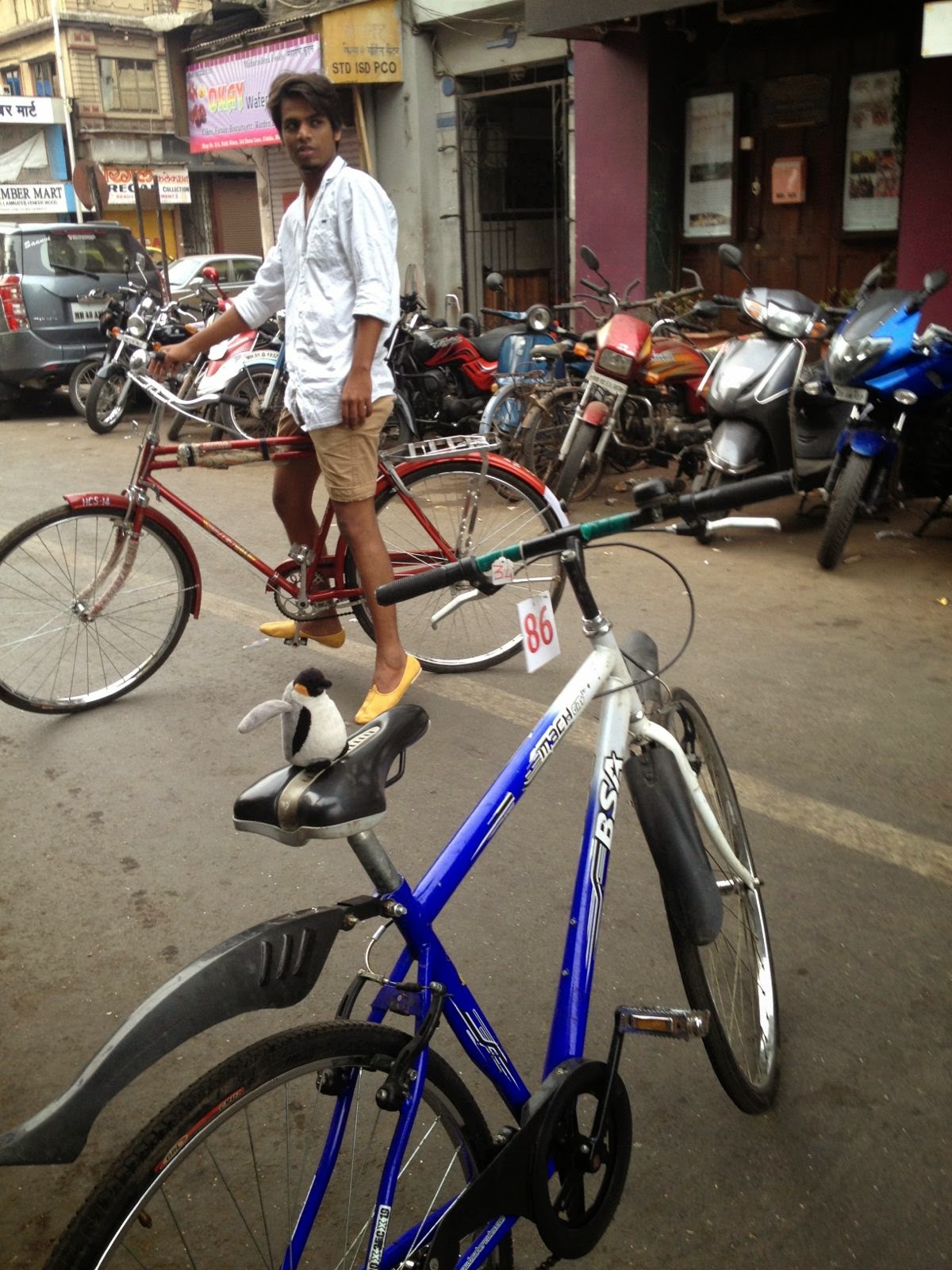
I had already been to the Taj Mahal Palace and Gateway of India, but without the traffic and noise, and with the sunrise over the harbor, they look much more stately. An enormous number of corvids (the crows here have a gray mohawk, they’re pretty funny) was waking up noisily as we were there.
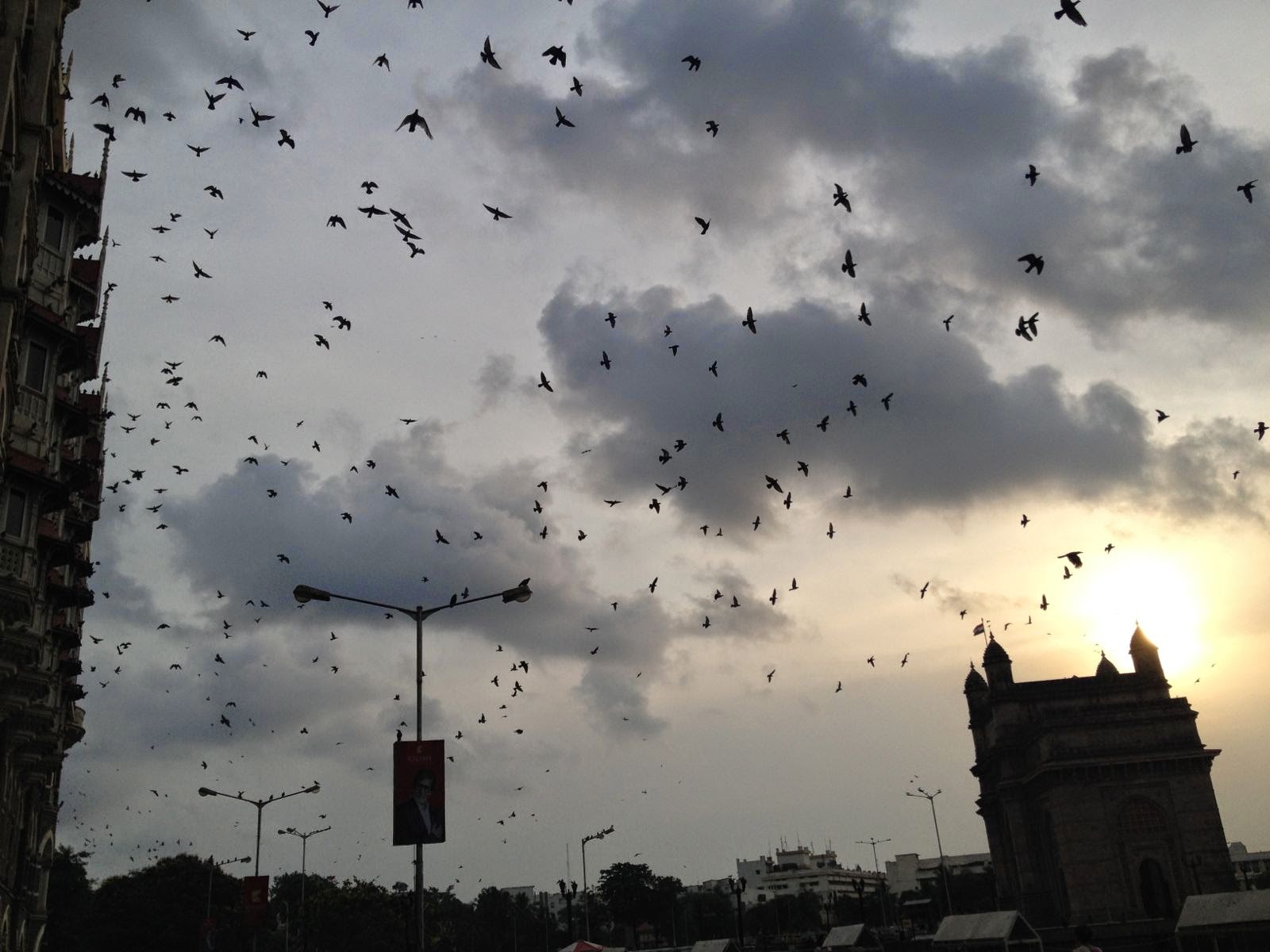
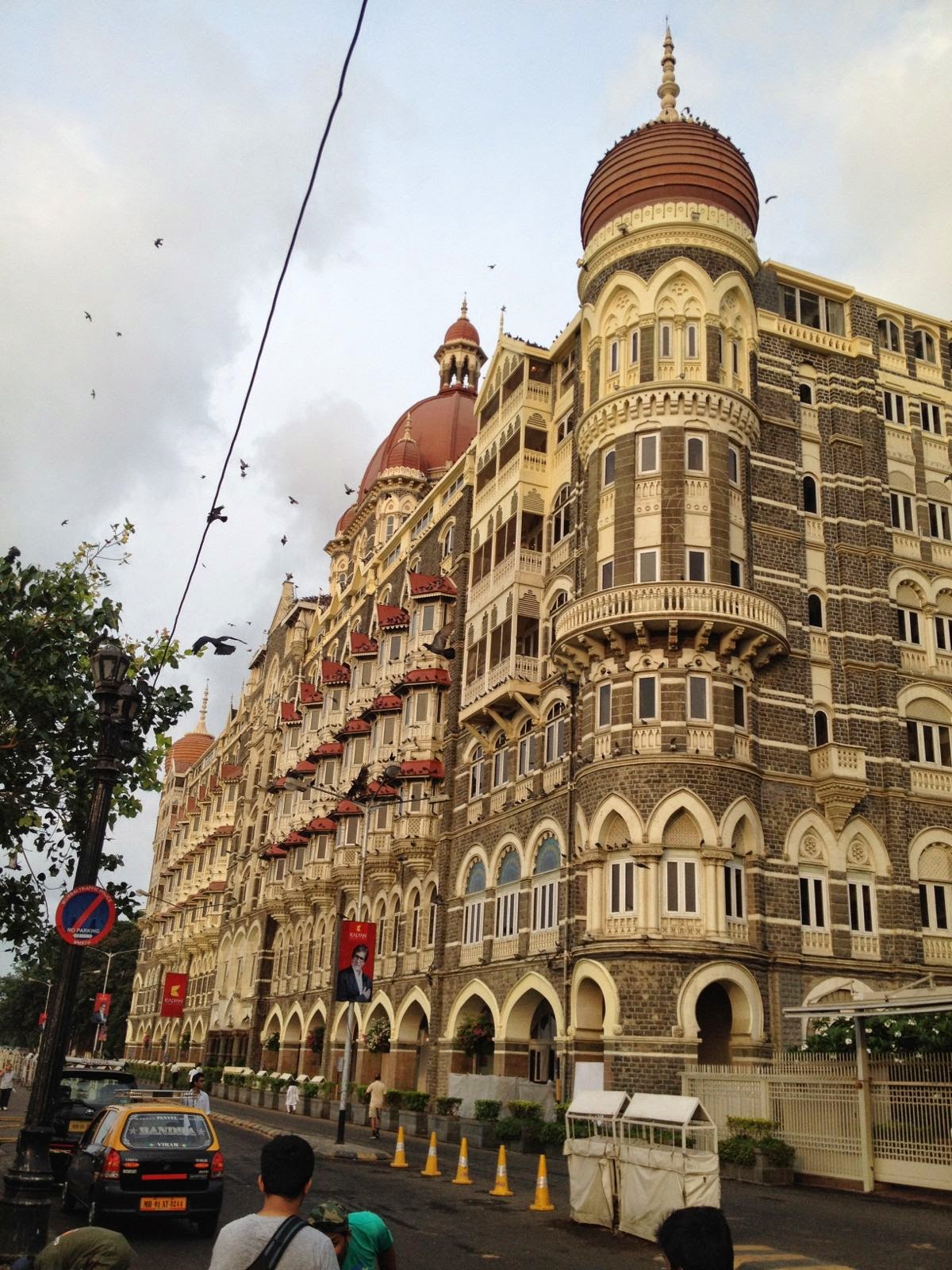
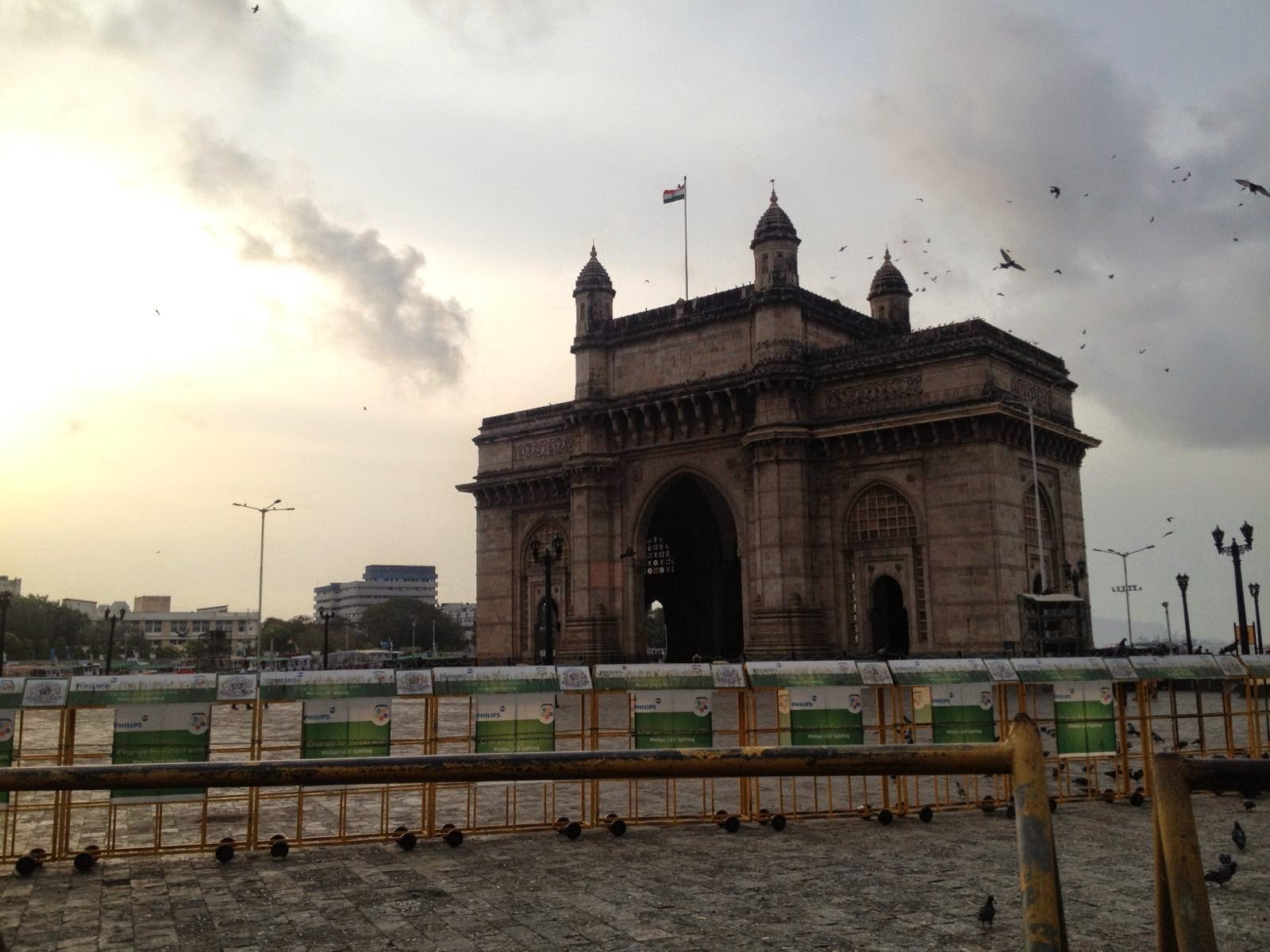
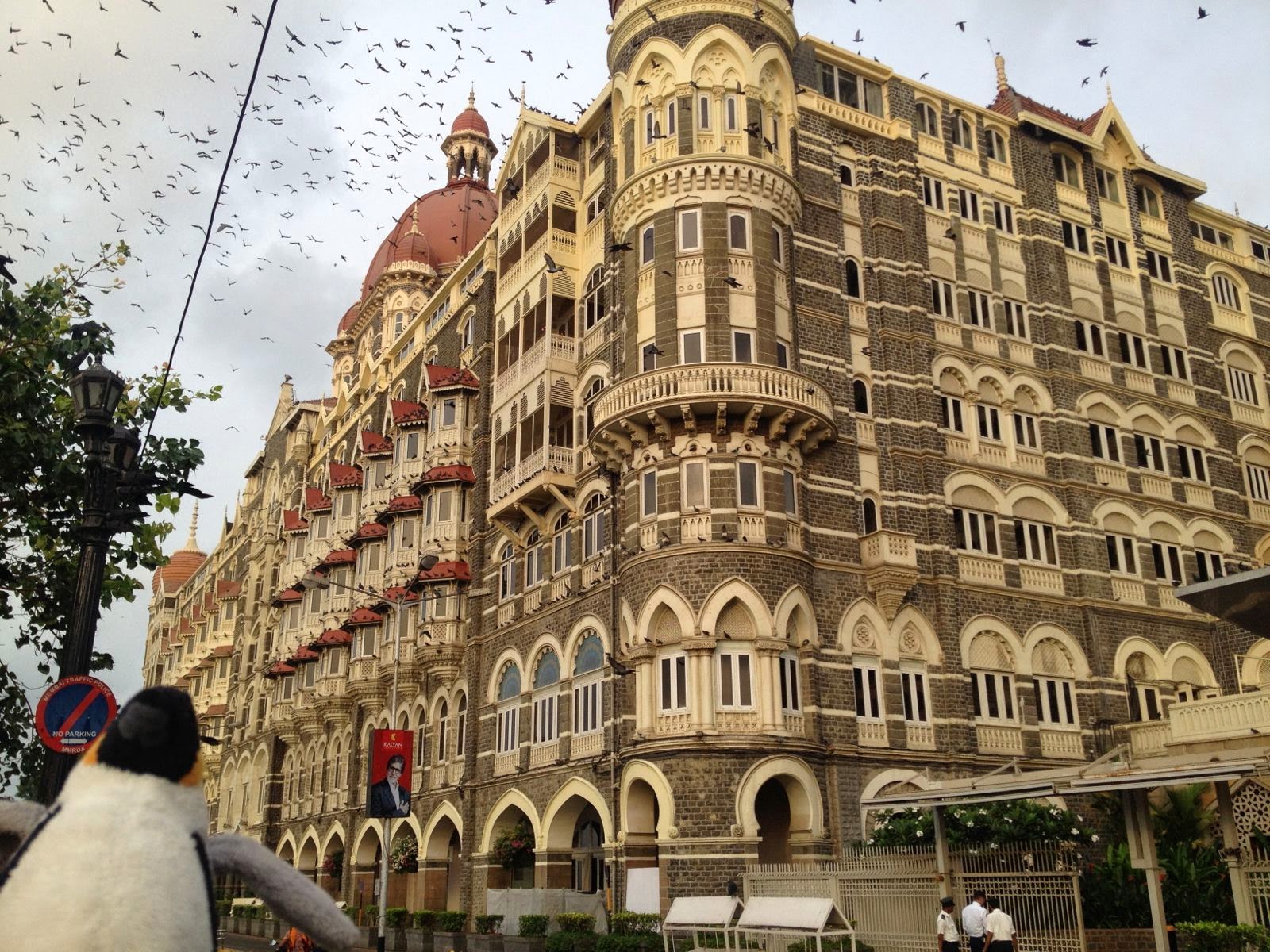
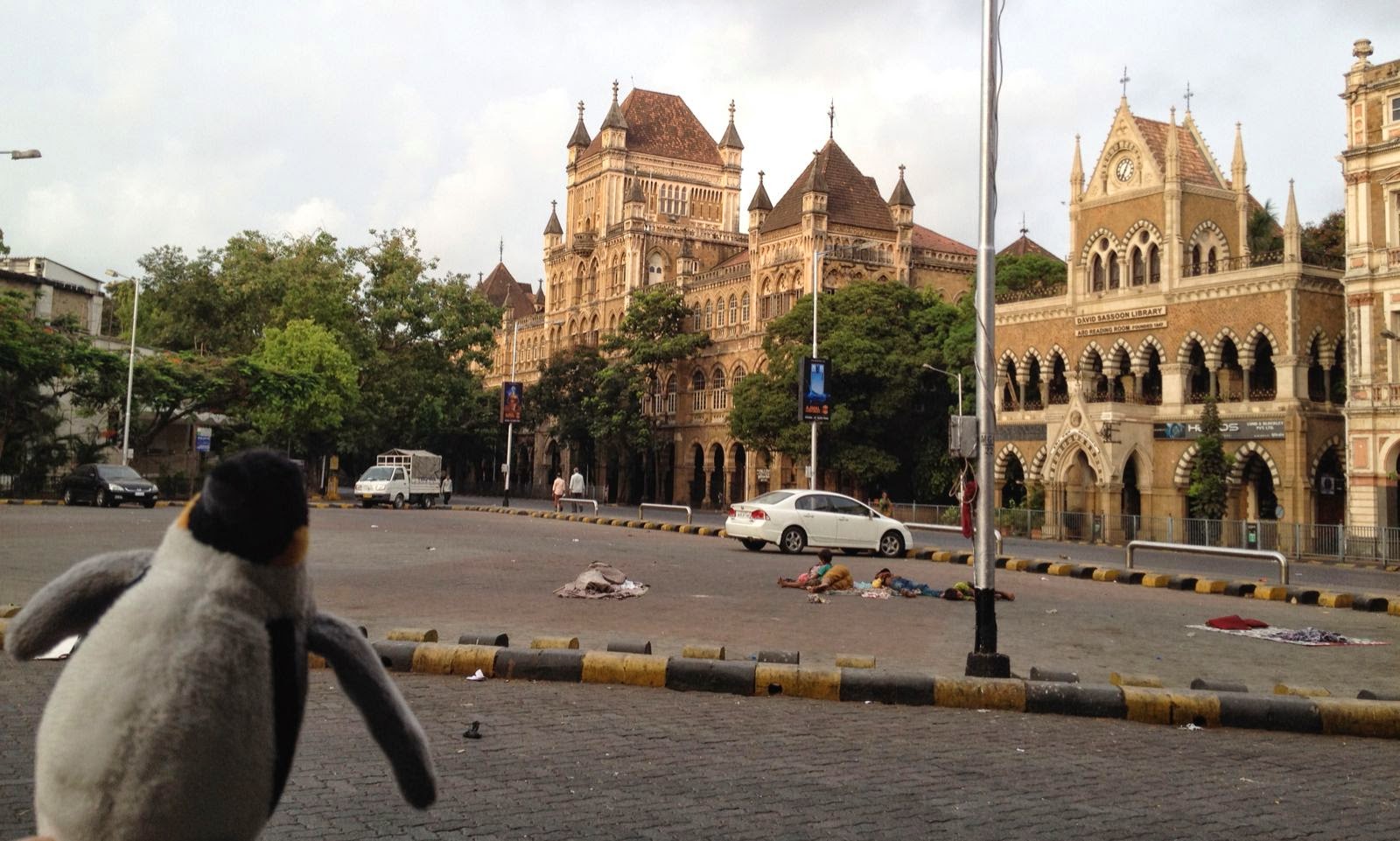

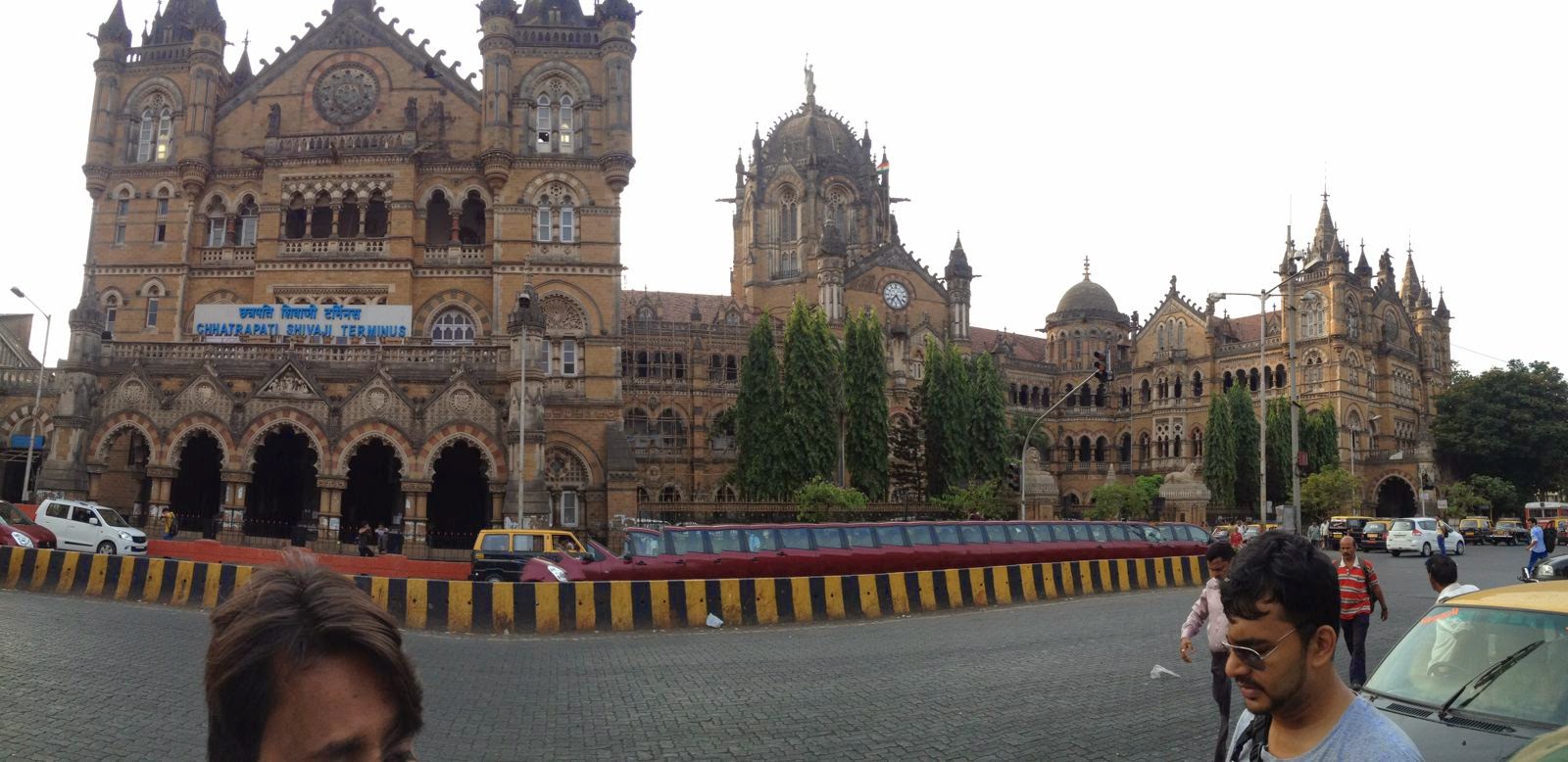
Notice the almost total absence of cars as we stopped for some photos of Elphinstone College (top) and Victoria Terminus (bottom), in the area I’m calling the “colonial quarter” of Mumbai.
The next stop was Crawford Market, named for the British architect who built the market building in the late 1800s. In the 1990s, the name was changed to something Hindi during the “de-colonialization” of Mumbai place names, but Mumbaikars (even cab drivers) sometimes forget the new name, and so have I. The market is not unlike big markets anywhere else, except I’d say the meat market is a bit more of an assault on the senses, since as far as I can tell there is no refrigeration. It’s one of those breathe-through-your-mouth kind of markets.
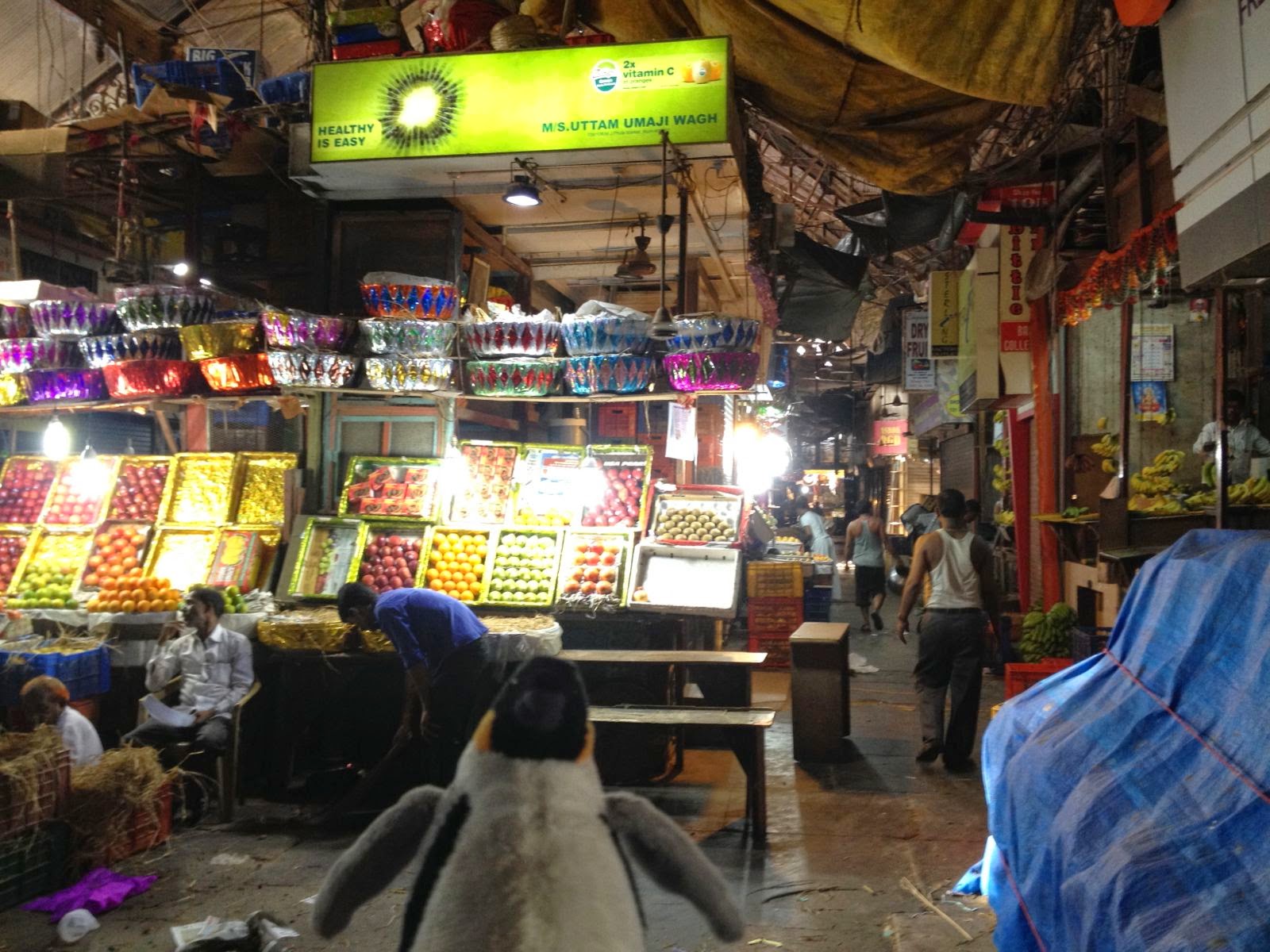
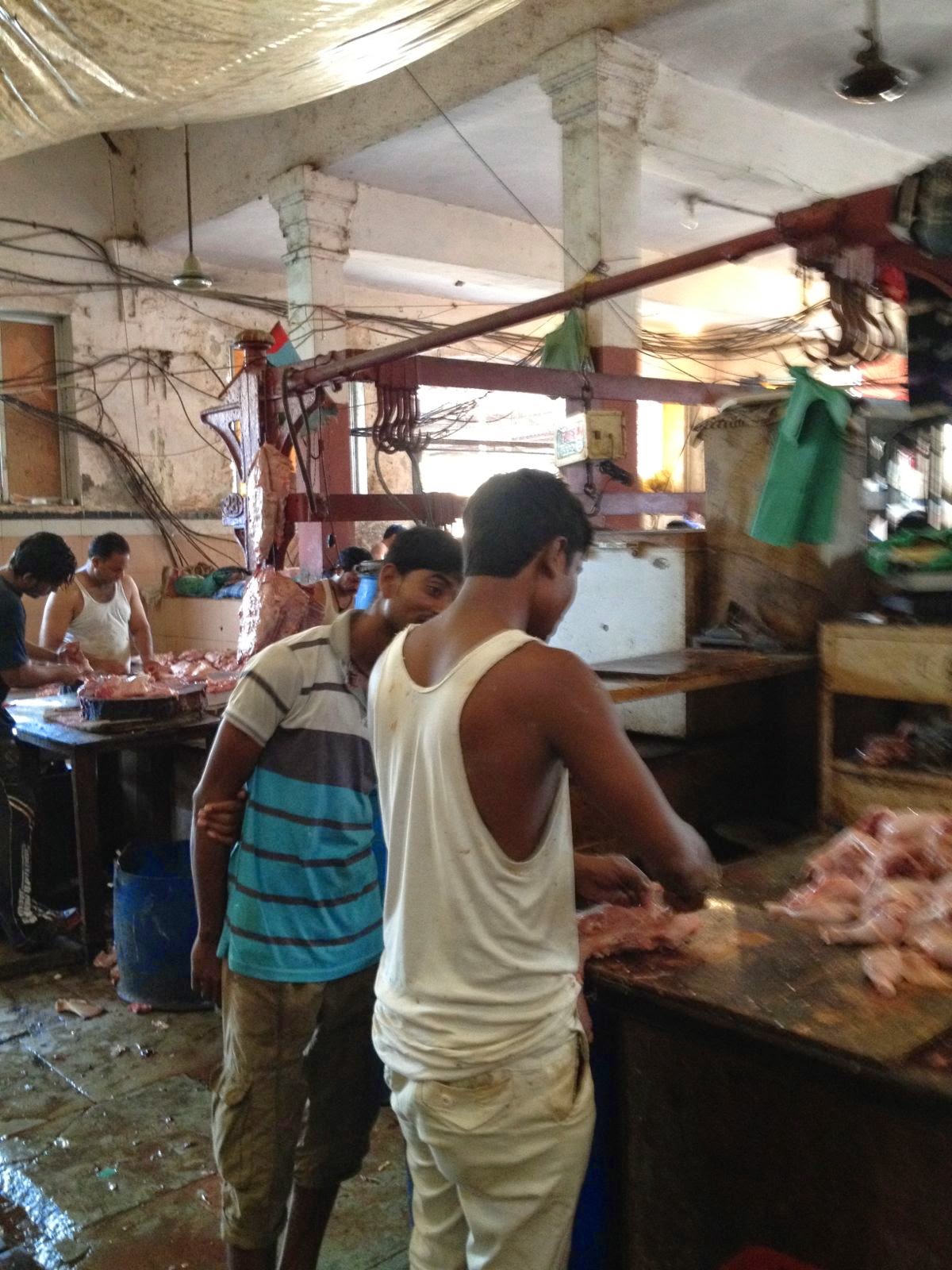
Needless to say, the next stop was the cow sanctuary. (What else would it be?) Cows are sacred to Hindus; I learned that they believe that within the cow’s stomach are the approximately 330 million (really) Hindu deities. This sanctuary, built by Parsis as I recall, is a place where several dozen cows are taken care of. Daily, they are fed, their living quarters cleaned out, the pregnant cows checked on, and so forth. There’s also a couple of cages of birds that are taken care of—lovebirds, budgies, cockatiels—which are spacious and where the water is changed daily. The birds actually looked happy and were all chirping and hopping. There is also a resident flock of geese.
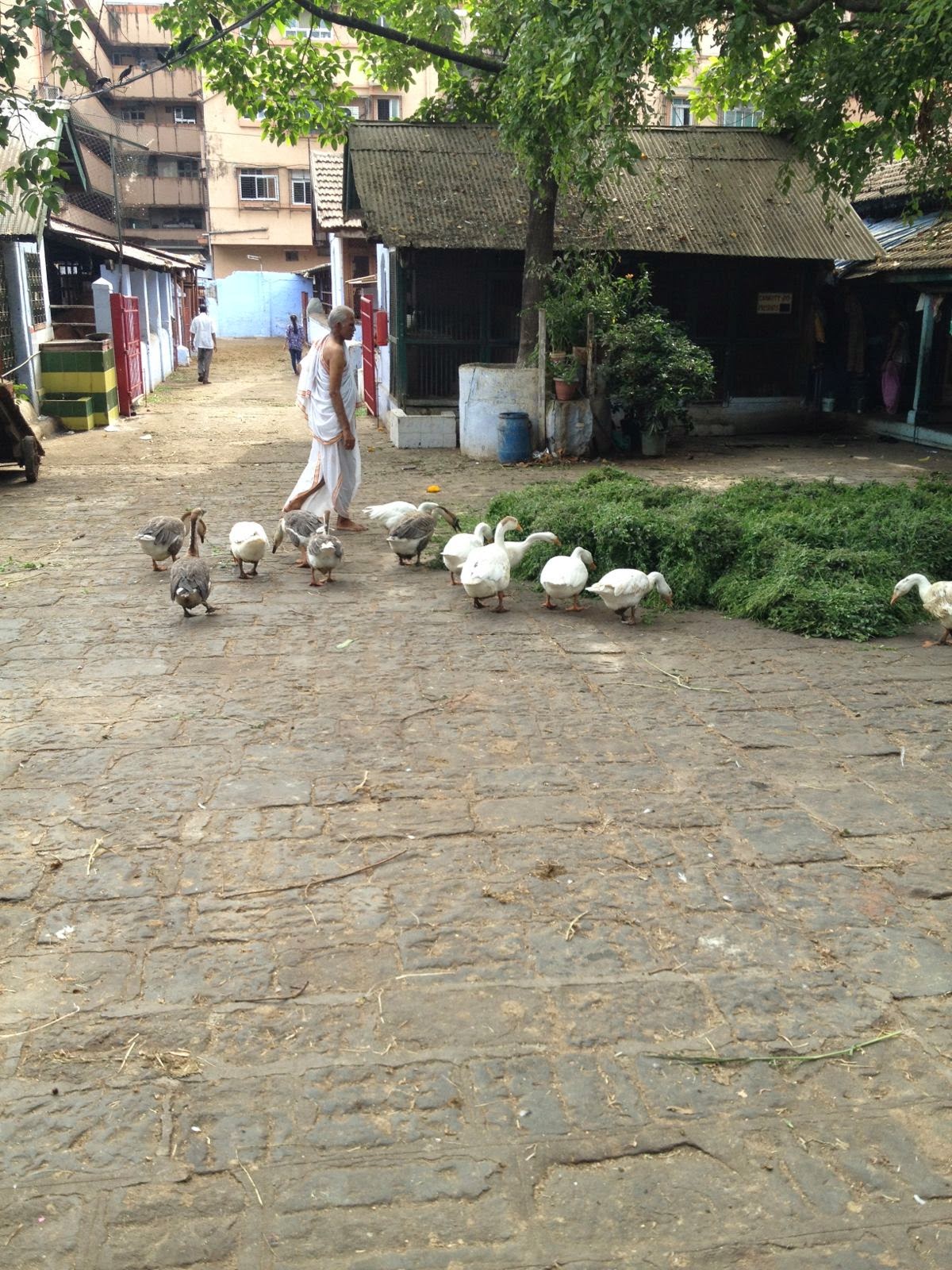
We walked our bikes through the flower market—this is an outdoor market/bazaar, unlike the covered Crawford Market, but it is right nearby…
…and another section of the market where some of the vendors were waking up, having their breakfast or doing their morning ablutions…
…to a Jain temple,where Penguin posed with our other guide Chetan.

At this point we decided we needed a snack, so we had some things that looked like pakoras but turned out to be more like battered onions—sort of a cross between onion rings and an “onion blossom” like you get at state fairs. The vendor was amused but indulged Penguin for a photo op.
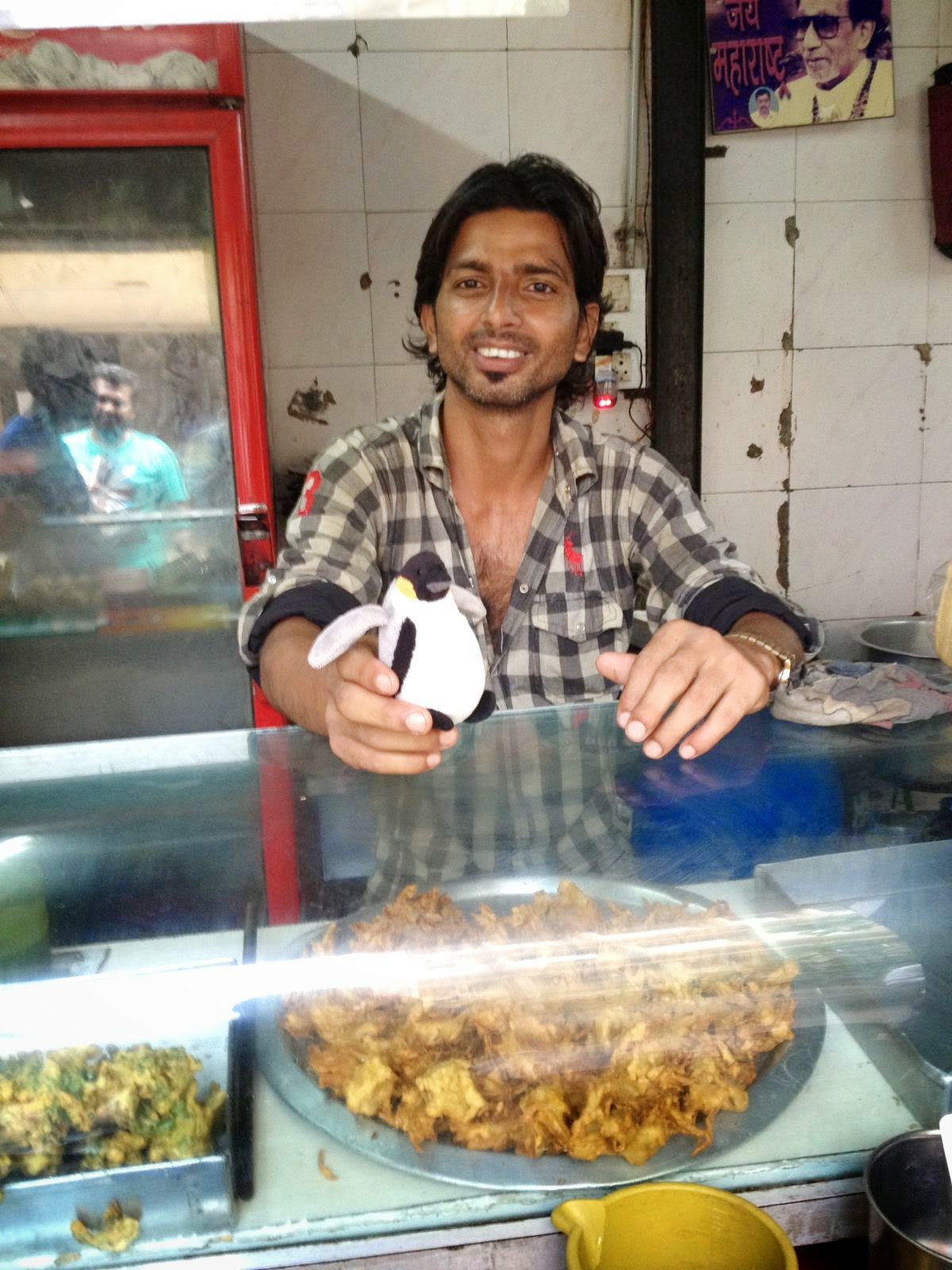
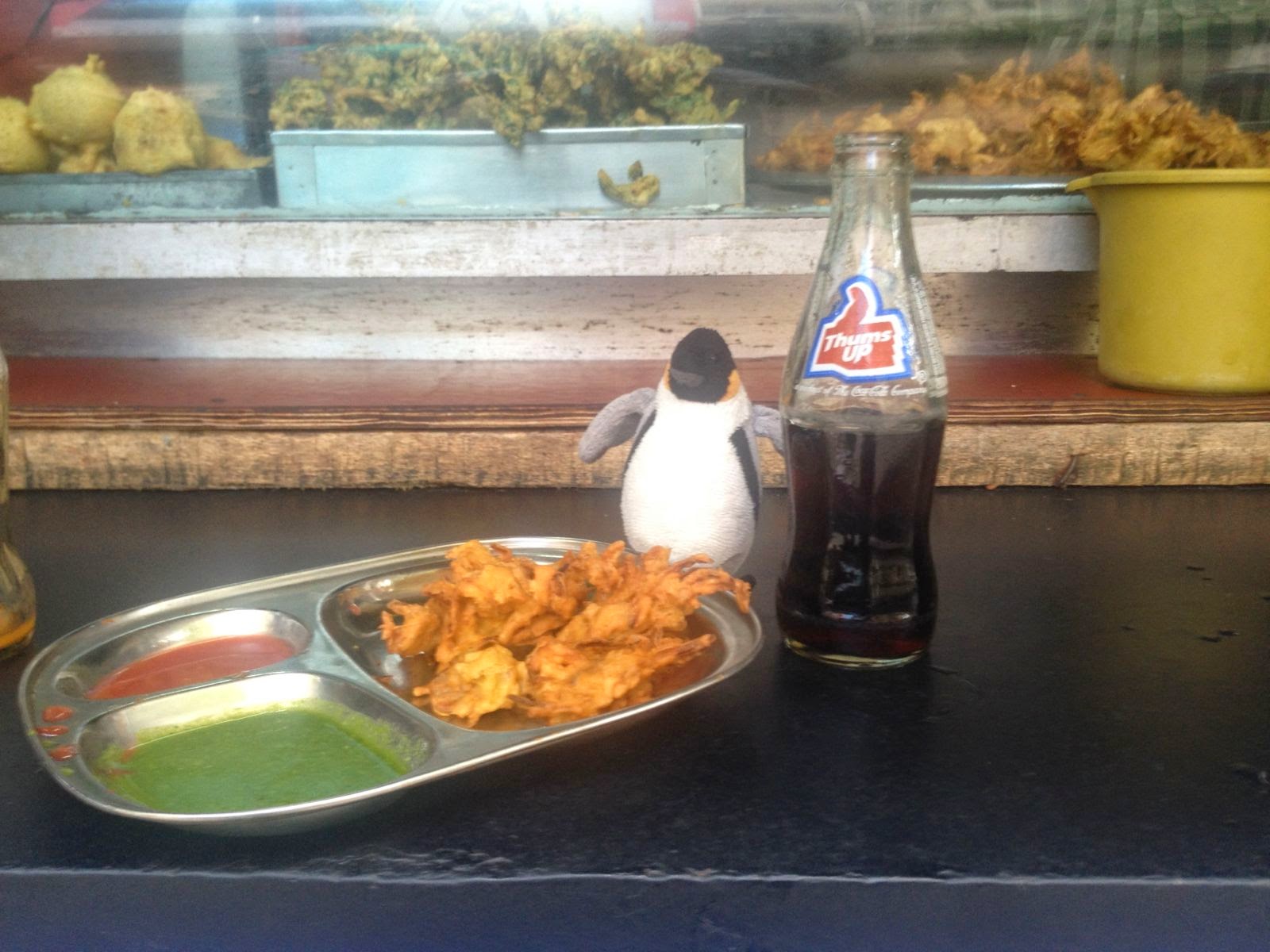
Our next stop was the fish market. It’s not as big as Tokyo’s Tsukiji, but it is a longstanding tradition—fishermen basically founded the city. The fishermen of old did not have the luxury of refrigeration or of sanitary tables on which to gut fish. Apparently, neither do today’s, and a fish market with no refrigeration and an outdoor temperature of about 95 degrees with 90+% humidity smells exactly as you’d expect. We didn’t stay long, and I left making a mental note to stick with the chicken curries. I would’ve taken a picture, but my hand was otherwise engaged holding a handkerchief over my nose.
We rode back along Marine Drive, which is the western waterfront of Mumbai and where Chowpatty Beach is (day 1)…
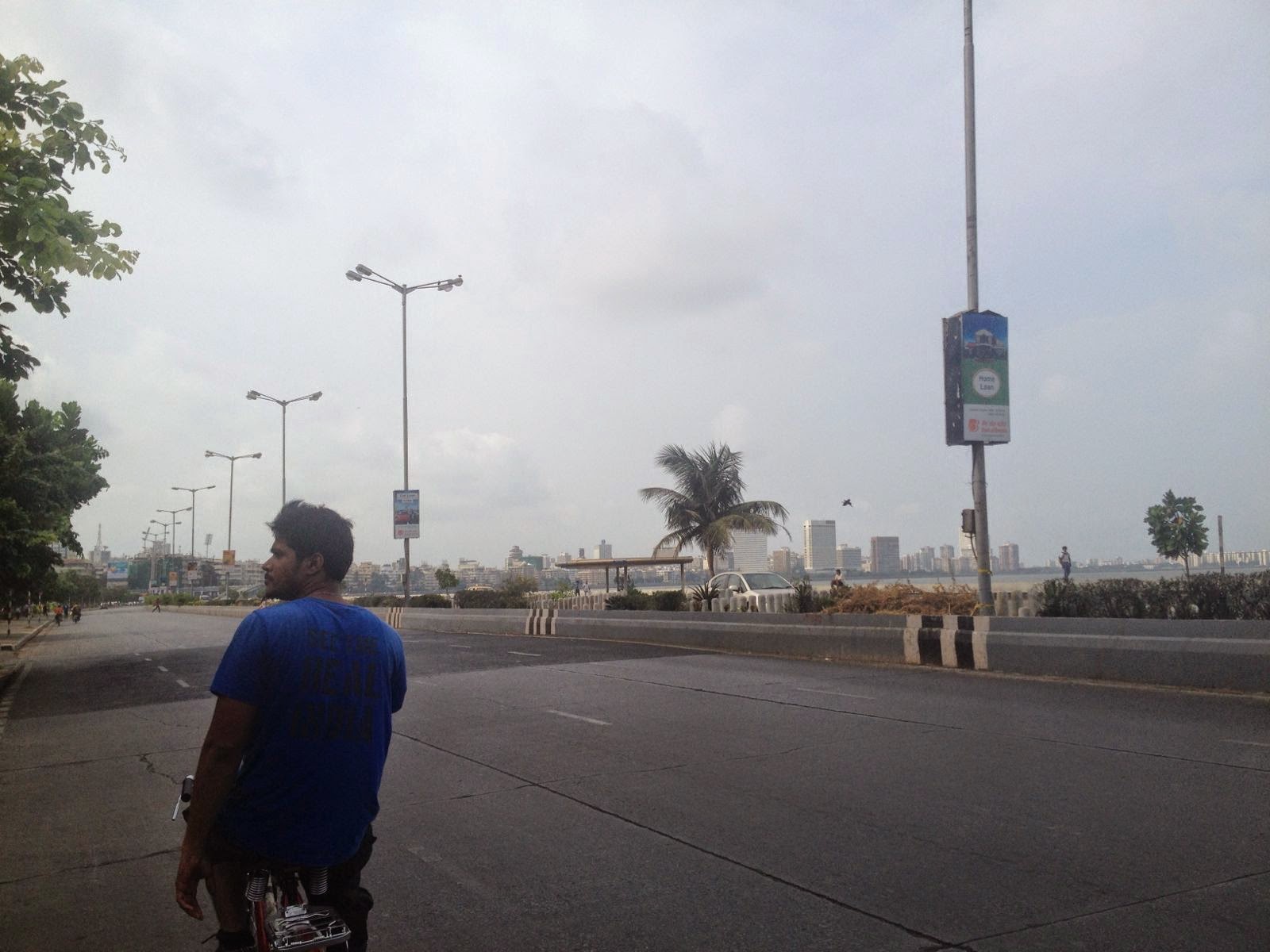
…and of course paused to see one of various random cows that wander around the city…
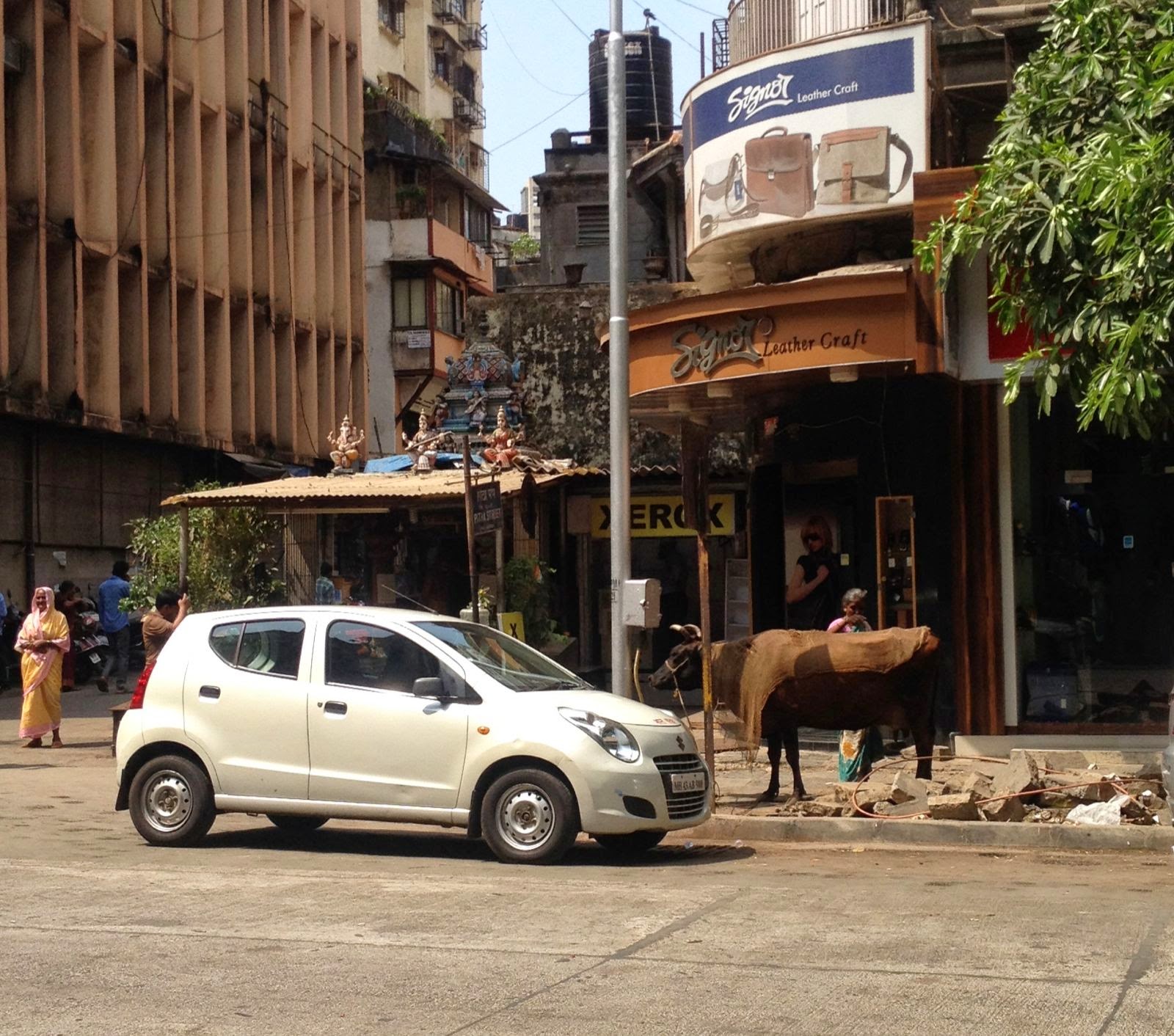
…before turning in our bikes and having another snack.
In all, if you’ve done some urban cycling in the US, this tour is mostly no problem. It gets tricky at the end because by 10am the traffic has really picked up. Fortunately, all rental bikes are equipped with the loud ring-ring handlebar bells, which bicyclists use the same way drivers use car horns. (“The hell with you, I’m coming through.”) By the end of the ride I was pretty accustomed to it. I don’t think I clipped anyone, and I had no near-misses with vehicles, which is good because the bike rental guy looked perplexed when I asked about borrowing a helmet. (No one in Mumbai uses one, including most people on motorbikes.)
Definitely recommended, but if you’ve never urban-cycled, it might freak you out. Now it’s back to the hotel to rest up during the midday hours, wring out my shirt and change, and head for the Dharavi slum tour, which will cap off my Mumbai experience!